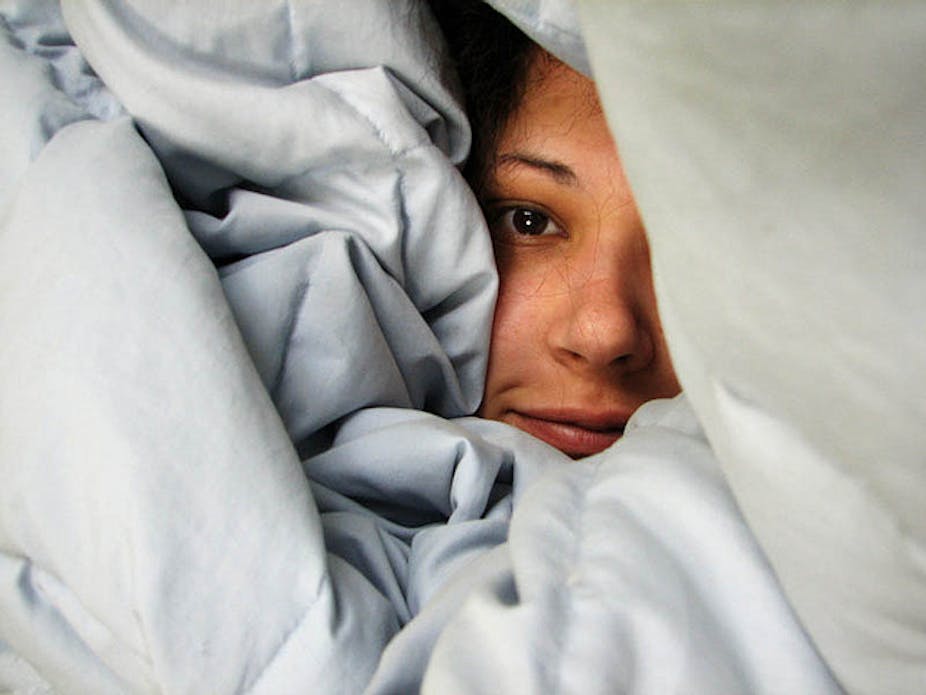Daylight saving time ends this weekend in most states and territories (barring Queensland, Western Australia and the Northern Territory), meaning we’ll turn our clocks back by one hour on Sunday morning.
“Spring forward, fall back” is a good prompt to remember which way to wind. But what appears to be a simple procedure each spring and fall does not immediately change our body clock time.
Internal body clock
The primary body clock, located in the brain, keeps the rhythmic variations of a number of bodily and behavioural functions – such as hormone production, temperature and digestive function – in synchrony with each other.
It also determines when we are alert and are sleepy (and prone to making mistakes if not safely in bed asleep). This process is called a circadian rhythm: “circa” (about) “dian” (a day).
This body clock is endogenous, meaning it keeps its own time. Therefore, after the transition off or onto daylight saving time, our circadian rhythm of sleepiness/alertness is an hour out of sync. It’s a bit like having very mild jet lag.
Fall back
Next week, after we come off daylight saving time, you’re likely to feel sleepy a little earlier than usual and be able to wake up earlier than usual. But the hour of jet lag is no problem for most of us because to link up with the new clock times we simply have to allow our circadian rhythms to delay by an hour.

As it turns out, most of us have an endogenous cycle length longer than 24 hours, meaning we have a natural tendency for our body clock to delay. If your cycle length was 25 hours, for example, it would take only one day to naturally fall in line with the changed clocks.
This delay tendency is the likely reason most people find it easier to adjust after a westward plane flight than an equivalent time zone shift flying eastward. Likewise, adjusting back to standard time for most of us is easy and can happen in one or two days.
But don’t get carried away
This tendency to delay can also cause problems when there is no clock change on the weekend. If you sleep in late on the weekend mornings, you get no light stimulation, since your eyes remain closed as you sleep.
The body (brain) clock is physically located about three centimetres behind the eyes and supplies information about light intensity (day versus night). Given that it receives input from the eyes, the clock can be nudged a bit earlier with light stimulation in the morning or later by light stimulation in the late evening.
Therefore, even on normal weekends without the backward clock change, sleeping in late can leave you feeling sleep-deprived the following week.

As we get into the dead of winter with less sunlight, some people experience winter depression or seasonal affective disorder (SAD). The reduced morning light results in a delaying drift of the circadian rhythms, thought to be the cause of the negative mood.
Bright morning light, which can re-time our body clock to an earlier time, has been shown to effectively treat SAD.
Spring forward
Setting our clocks forward in spring is a real challenge to our body clock. We will lose an hour rather than repeat it, plus we have to adjust our body clock earlier by an hour; the opposite to its natural tendency.
This means we’re likely to have trouble getting to sleep on the first Sunday at the start of daylight saving time and the week will start with a loss of sleep and mini jet-lag. Studies have shown daytime functioning is impaired for several days and the rate of car accidents increases on the Monday following the shift onto daylight saving time.
Bright morning light can help our body clock adjust to daylight saving time in the spring. So, on the Saturday, avoid sleeping late and get into the spring sunshine as early as possible.
On the Sunday, get up half an hour later by the new daylight saving time (half an hour earlier by your body clock) and get an hour or two of morning light.

